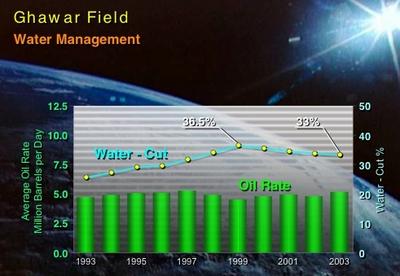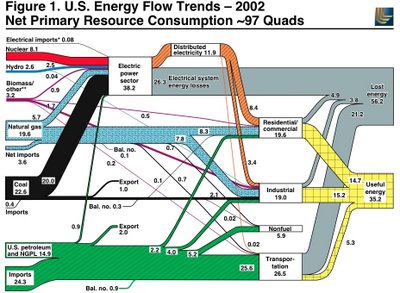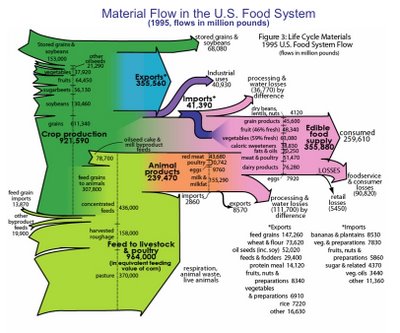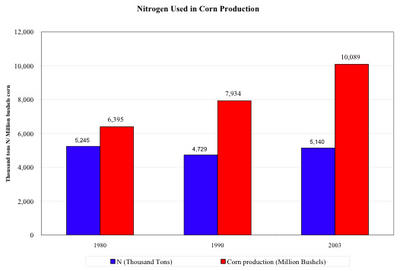119. WILL THE WORLD PEAK WHEN GHAWAR PEAKS?
ANSWER: No.
This is one of the silliest and most rampant myths out there. Every peak oil idiot out there is parroting the soundbite:
The gold bugs: "When Ghawar peaks (Ghawar is the largest oil field ever found) Saudi Arabia peaks and when Saudi Arabia peaks the whole World peaks."Source
Investors: "The common mantra is that when Ghawar peaks, Saudi Arabia peaks and hence the world peaks."Source
Newshounds: "Those who study oil depletion have long known that when Ghawar peaks, the world peaks."Source
The nice folks over at Armageddon Online: "Yeah, I think when Ghawar peaks, the world peaks."Source
Chinese investors: "Saudi Arabia peaks when Ghawar peaks(Ghawar is the largest oil field ever found in Saudi Arabia)."Source
Here's the FYI folks... Ghawar peaked in 1981:
The Ghawar Field was discovered in 1948. Production began in 1951 and reached a peak of 5.7 million barrels per day in 1981. This is the highest sustained oil production rate achieved by any single oil field in world history. At the time that this record was achieved, the southern areas of Hawiyah and Haradh had not yet been fully developed. Production was restrained after 1981 for market reasons, but Ghawar remained the world's most important oil field. The production of Russia's Samotlor field was greater during the mid-eighties, but this was because Ghawar's production was restrained. Development of the southern Hawiyah and Haradh areas during 1994 to 1996 allowed production from the Ghawar Field to exceed 5 million barrels per day once again, more than Samotlor ever produced.SourceDid Saudi Arabia peak in 1981? No. Did the world peak in 1981? No.
If you're wondering what Ghawar's been up to lately, here's the production stats from Aramco(pdf) (click the image for a clearer view):

Notice that the water cut has been dropping since 1999. All this hysteria about water cut is just another diaper load of hype from the peak oil hysterics and profiteers. Oil fields are routinely produced with water cuts of even 90% without anyone batting an eye. Here's the real info from Ali Daneshy, director of petroleum engineering at the University of Houston and retired vice president of Halliburton:
Regarding water production, this is a natural and unavoidable aspect of oil and gas production and often intentionally induced by water flooding. Water injection helps boost production by sweeping the oil out of the reservoir and maintaining its pressure. We are doing this in Texas every day, producing more than 1 million barrels of oil with a water-oil ratio over 12! In Prudhoe Bay this ratio is more than 3. By comparison, the estimated water-oil ratio for Saudi Arabia is slightly over 1. When considered with the long-term high oil production, this low ratio is a strong testimony to the thickness and size of Saudi oil zones and their ability to sustain this production for some time. Depending on specific location, each barrel of produced water may cost the operator $0.10-$2.00. At today’s prices, one can produce 20 barrels of water for each barrel of oil and still maintain a profitable operation. And the Saudis are a long way from it!SourceIsn't that amazing? Texas has a water cut of 92%, and Prudhoe Bay has a water cut of more than 75%. How come the gold bugs and the profiteers aren't shrieking about the imminent collapse of Texas and Prudhoe Bay?
I guess it all comes down to who you want to believe about water cuts:
a) Matt Simmons, an MBA from Houston who dabbles in reservoir engineering as a hobby, and has a banking firm with $60 billion in assets under management -- a large portion of which are no doubt ballooning in value with all the water cut hysteria he is whipping up. OR
b) Ali Daneshy, director of petroleum engineering at the University of Houston.
=========
Also, referring to P. 306 of the DOE's Annual Energy Review 2004, we see that, in 2004, Saudi Arabia produced 9.1mbd and Russia produced 8.8mbd. So why aren't we all getting hysterical about the Russian peak and Russian horizontal wells and Russian water cut? How come the sound bite isn't: "When Russia peaks, the world peaks"?
I'll tell you why: This isn't about logic, it's about Matt Simmons' obsession with the Saudis. Why is he so obsessed with the Saudis? Because he's one of those Americans who think they own Saudi Arabia. They think Saudi oil is their oil, and they don't trust the Saudis with their grubby hands all over it.




























